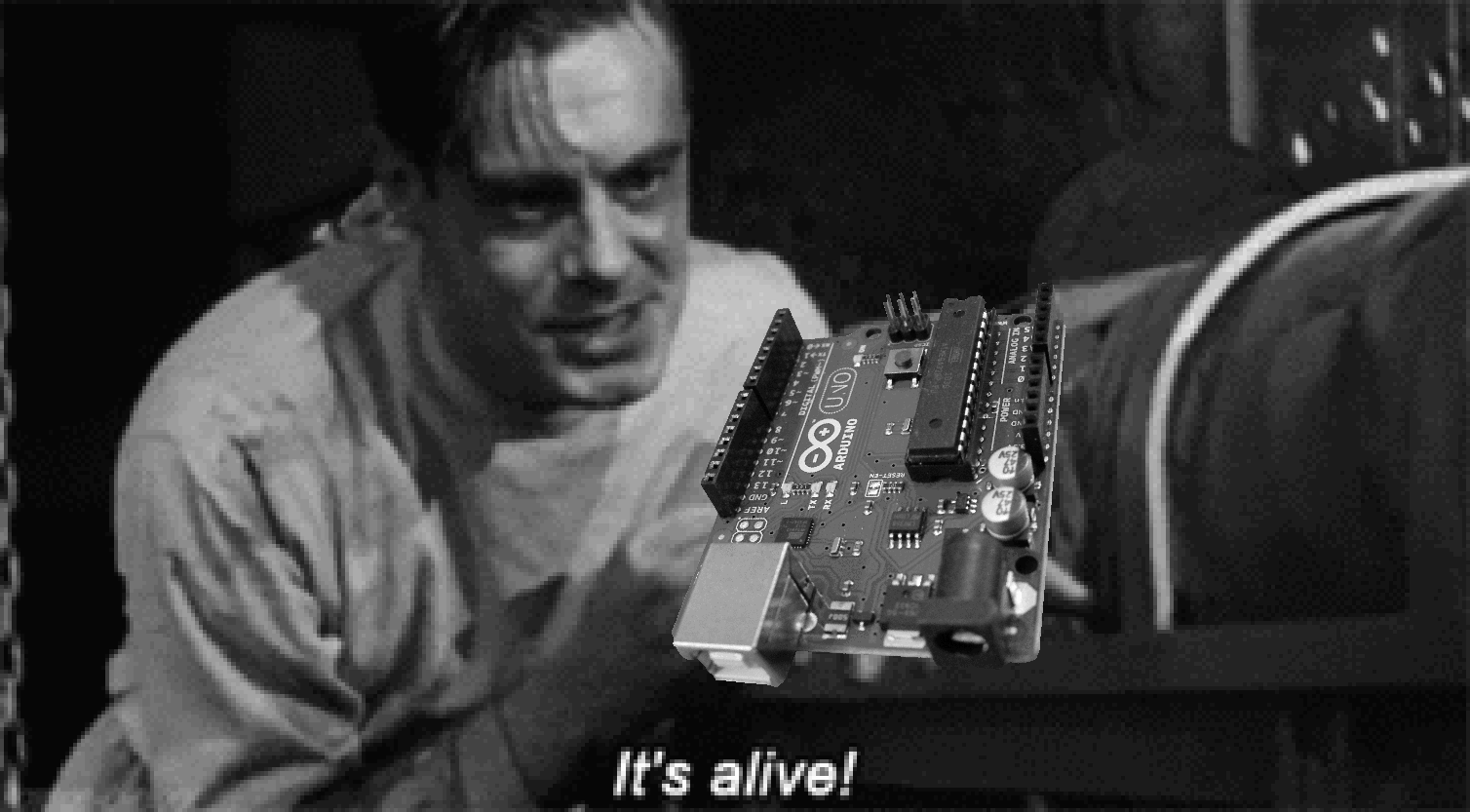
Arduino est une plateforme open-source de prototypage d’électronique.
Arduino introduction
Comment connecter un capteur qui a deux pattes.

On va utiliser une resistance de 10k ohm pour créer un pont diviseur de tension.

Different types of sensors
Simple switch ON/OFF
 bouton
bouton
Ces capteurs fonctionne grâce à une resistance variable.
 Potentiomètre
Potentiomètre
 FSR (Force sensing resistance)
FSR (Force sensing resistance)
 FSR (Force sensing resistance)
FSR (Force sensing resistance)
 Capteur de torsion/flexion
Capteur de torsion/flexion
 LDR (Light dependant resistance)
LDR (Light dependant resistance)
 Capteur de pluie
Capteur de pluie
 Capteur d’humidité
Capteur d’humidité
 Capteur de niveau
Capteur de niveau
Capteur piezoÉlectrique
 Ce capteur utilise l’effet piezo électrique pour mesurer des changements de pression, de force, de vibration…
Ce capteur utilise l’effet piezo électrique pour mesurer des changements de pression, de force, de vibration…
Faire du son
On peut utiliser la librairie TONE
Syntax
tone(pin, frequency)
tone(pin, frequency, duration)
Parameters
pin: the pin on which to generate the tone
frequency: the frequency of the tone in hertz – unsigned int
duration: the duration of the tone in milliseconds (optional) – unsigned long
| Board | Min frequency (Hz) | Max frequency (Hz) |
| Uno, Mega, Leonardo and other AVR boards | 31 | 65535 |


Un exemple de code pour faire un simple « theremin » avec l’arduino utilisant une LDR, un speaker et la librairie Tone
1 2 3 4 5 6 7 8 9 10 11 12 13 14 15 16 17 18 19 20 21 22 23 24 25 26 27 28 29 30 31 32 33 34 35 36 37 38 39 40 41 42 | // These constants won't change:const int LDR = A0; // pin that the sensor is attached toconst int Speaker = 9; // pin that the LED is attached to// variables:int sensorValue = 0; // the sensor valueint sensorMin = 1023; // minimum sensor valueint sensorMax = 0; // maximum sensor valuevoid setup() {// turn on LED to signal the start of the calibration period:pinMode(13, OUTPUT);digitalWrite(13, HIGH);// calibrate during the first five secondswhile (millis() < 5000) { sensorValue = analogRead(LDR); // record the maximum sensor value if (sensorValue > sensorMax) {sensorMax = sensorValue;}// record the minimum sensor valueif (sensorValue < sensorMin) {sensorMin = sensorValue;}}// signal the end of the calibration perioddigitalWrite(13, LOW);}void loop() {// read the sensor:sensorValue = analogRead(LDR);// apply the calibration to the sensor readingsensorValue = map(sensorValue, sensorMin, sensorMax, 50, 4000);// play the tonetone(Speaker, sensorValue);//Take a breakdelay(10);} |
Comment faire un capteur capacitif
Pour cela, il vous faut la librairie capacitiveSensor. Vous pouvez l’installer via le menu : Sketch/Include library/manage library/…

Brancher le capteur à Arduino
Quelle resistance utiliser
Use a 1 megohm resistor (or less maybe) for absolute touch to activate.
With a 10 megohm resistor the sensor will start to respond 10-15 centimeters away.
With a 40 megohm resistor the sensor will start to respond 30-60 centimeters away (dependent on the foil size). Common resistor sizes usually end at 10 megohm so you may have to solder four 10 megohm resistors end to end.
One tradeoff with larger resistors is that the sensor’s increased sensitivity means that it is slower. Also if the sensor is exposed metal, it is possible that the send pin will never be able to force a change in the receive (sensor) pin, and the sensor will timeout.
Also experiment with small capacitors (100 pF – .01 uF) to ground, on the sense pin. They improve stability of the sensor.
Code pour le capteur capacitif :
1 2 3 4 5 6 7 8 9 10 11 12 13 14 15 16 17 18 19 20 21 | #include <CapacitiveSensor.h>CapacitiveSensor cs_4_2 = CapacitiveSensor(4,2); // 10M resistor between pins 4 & 2, pin 2 is sensor pin, add a wire and or foil if desiredvoid setup() { cs_4_2.set_CS_AutocaL_Millis(0xFFFFFFFF); // turn off autocalibrate on channel 1 - just as an example Serial.begin(9600);}void loop() { long start = millis(); long total1 = cs_4_2.capacitiveSensor(30); Serial.print(millis() - start); // check on performance in milliseconds Serial.print("\t"); // tab character for debug windown spacing Serial.println(total1); // print sensor output 1 delay(10); // arbitrary delay to limit data to serial port } |
